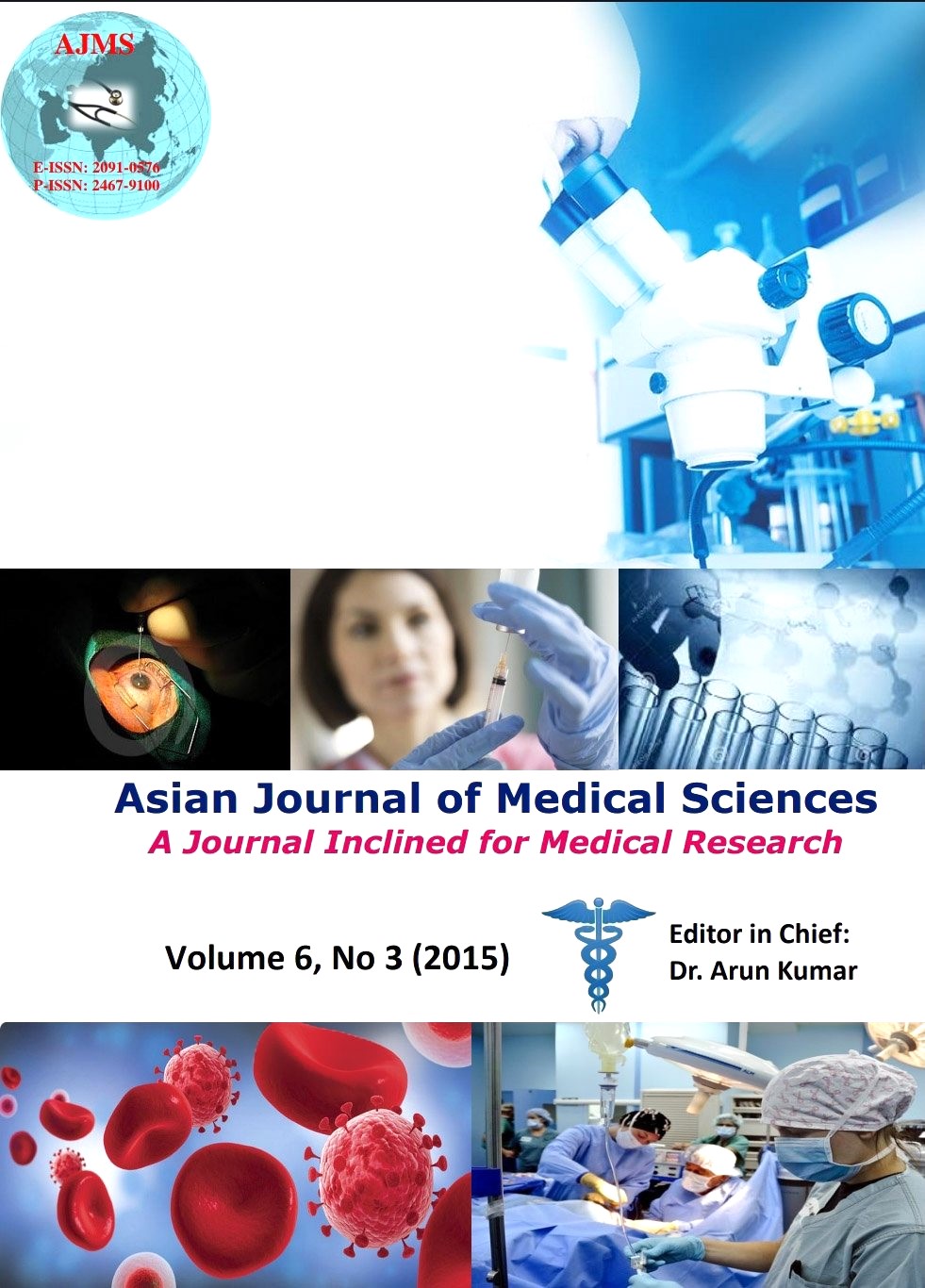Seroprevalence of hepatitis B infections among blood donors in Bijapur district Karnataka - Retrospective study
Keywords:
Hepatitis B infection, seropositivity, prevalence, blood donorsAbstract
Objectives: To determine the seroprevalence of HBsAg in the prevalence of HBsAg positivity among male and female blood donors.
Materials and Methods: A retrospective study was conducted in blood bank. Voluntary and replacement blood donors including male and female donors over a period of two years six month to assess the prevalence of hepatitis B virus infection. ELISA method and alternatively Hepacard kit were used for screening the donors.
Results: A retrospective study was carried on 7,018 blood donors out of which males were 5,936 and 1,082 were females. The prevalence of HBsAg sero positivity in 2011 July to December in male donors were 2.8%; in female donors 0.0%; 2012 January to December in male donors were 2.9% and female donors were 0.3%; 2013 January to December in male donors were 1.8% and Female donors were 0.0% . Overall prevalence was estimated to be 7.8%.
Conclusion: Hepatitis B infection remains a significant public health problem in India and its seroprevalence was more as compared to other transfusion transmitted infections, especially in younger age group. The increasing prevalence of HBsAg can be reduced by more sensitive screening assays.
DOI: http://dx.doi.org/10.3126/ajms.v6i3.10862
Asian Journal of Medical Sciences Vol.6(3) 2015 12-15
Downloads
Downloads
Additional Files
Published
How to Cite
Issue
Section
License
Authors who publish with this journal agree to the following terms:
- The journal holds copyright and publishes the work under a Creative Commons CC-BY-NC license that permits use, distribution and reprduction in any medium, provided the original work is properly cited and is not used for commercial purposes. The journal should be recognised as the original publisher of this work.
- Authors are able to enter into separate, additional contractual arrangements for the non-exclusive distribution of the journal's published version of the work (e.g., post it to an institutional repository or publish it in a book), with an acknowledgement of its initial publication in this journal.
- Authors are permitted and encouraged to post their work online (e.g., in institutional repositories or on their website) prior to and during the submission process, as it can lead to productive exchanges, as well as earlier and greater citation of published work (See The Effect of Open Access).




